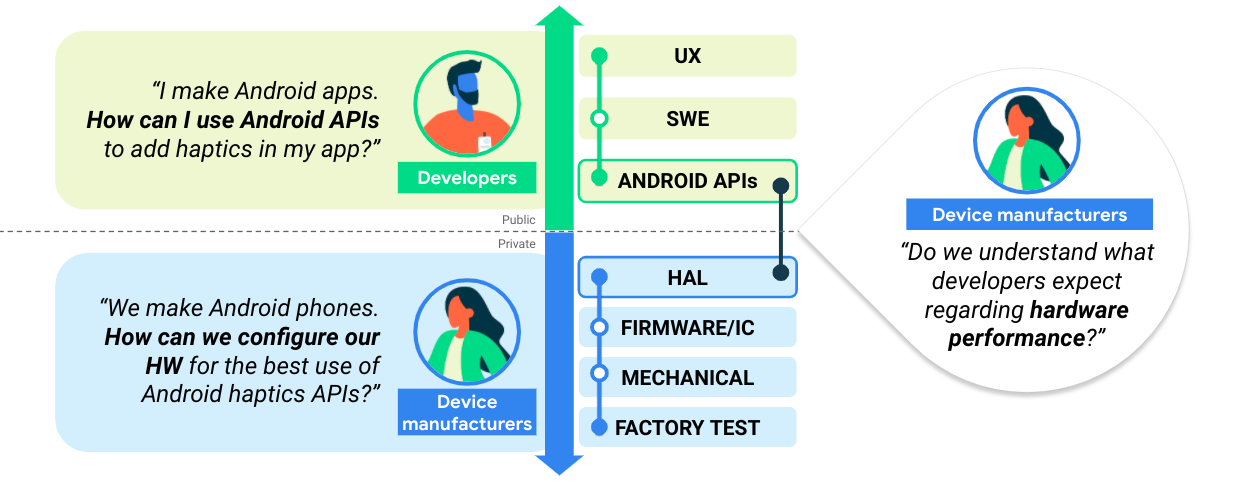일반적으로 기기 제조업체는 각 기기에 대해 생성된 비공개 애셋의 소유자로 간주됩니다. 따라서 기기 제조업체의 엔지니어링 작업은 흔히 기기별로 집중됩니다. 그리고 기기 제조업체는 생태계에 있는 다른 기기와의 일관성을 위해 거의 노력하지 않습니다.
이와는 대조적으로 개발자는 각 기기의 기술 사양과 관계없이 생태계의 모든 Android 휴대전화에서 작동하는 앱을 빌드하려고 노력합니다. 이러한 접근 방식의 차이로 인해 조각화 문제가 발생할 수 있습니다. 예를 들어 특정 휴대전화의 하드웨어 기능이 앱 개발자가 설정한 기대와 일치하지 않습니다. 따라서 햅틱 API가 일부 Android 휴대전화에서는 작동하지만 다른 휴대전화에서는 작동하지 않는다면 결과적으로 생태계가 일관되지 않게 됩니다. 이러한 이유로 제조업체가 모든 기기에 Android 햅틱 API를 구현할 수 있도록 하는 데 하드웨어 구성이 중요한 역할을 합니다.
이 페이지에서는 Android 햅틱 API를 최대한 활용할 수 있도록 하드웨어 규정 준수를 설정하는 단계별 체크리스트를 제공합니다.
다음 그림에서는 기기 제조업체와 개발자 간의 공통 지식 구축을 보여주는데, 이 단계는 일관성 있는 생태계를 만드는 데 매우 중요합니다.

그림 1. 기기 제조업체와 개발자 간의 지식 구축
햅틱 구현 체크리스트
-
- 햅틱을 구현하기 위한 상수 목록입니다.
-
- HAL 구성 프리미티브 구현 가이드입니다.
-
- 프레임워크의 자리표시자라는 공개 API 상수와 자리표시자를 구현하는 HAL 상수 간의 매핑 권장사항입니다.
- 이 프로세스에 관해 자세히 알아보려면 권장 매핑을 안내하는 디자인 원칙을 참고하세요.
-
- 진폭 및 주파수 엔벨로프 구현 가이드
-
- 타겟 햅틱 효과에 관한 안내입니다. 이러한 안내에 따라 하드웨어에 관해 빠르게 확인할 수 있습니다.

